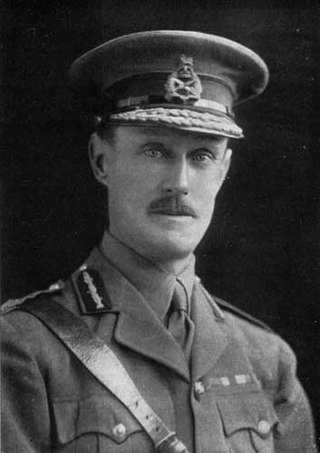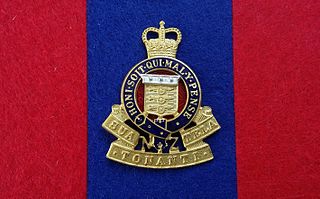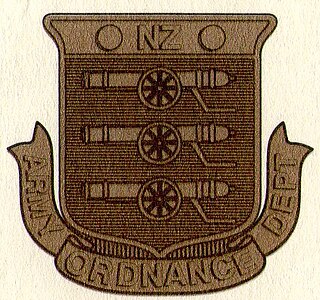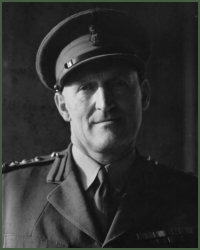The British Expeditionary Force (BEF) was the six-divisions the British Army sent to the Western Front during the First World War. Planning for a British Expeditionary Force began with the 1906–1912 Haldane Reforms of the British Army carried out by the Secretary of State for War Richard Haldane following the Second Boer War (1899–1902).

The New Zealand Expeditionary Force (NZEF) was the title of the military forces sent from New Zealand to fight alongside other British Empire and Dominion troops during World War I (1914–1918) and World War II (1939–1945). Ultimately, the NZEF of World War I became known as the First New Zealand Expeditionary Force. The NZEF of World War II was known as the Second New Zealand Expeditionary Force (2NZEF).

The New Zealand Army is the principal land warfare force of New Zealand, a component of the New Zealand Defence Force alongside the Royal New Zealand Navy and the Royal New Zealand Air Force.

The Royal New Zealand Army Logistic Regiment, is the New Zealand Army's main military Logistics and combat service support (CSS) element. It is the largest regiment in the NZ Army.

General Sir Alexander John Godley, was a senior British Army officer. He is best known for his role as commander of the New Zealand Expeditionary Force and II Anzac Corps during the First World War.

The Royal New Zealand Electrical and Mechanical Engineers (RNZEME) was a New Zealand Army Corps comprising Army trained tradesmen (craftsmen) who repaired Army equipment wherever New Zealand Forces served.

The Royal New Zealand Army Ordnance Corps (RNZAOC) concerned itself with the provisioning of troops with the means to fight; specifically uniforms, weapons and equipment. Ordnance functions go back hundreds of years; the first Ordnance Officer in the British military appeared in the year 1299. Designated "Keeper of the King's Wardrobe", his duties included the care and accounting of heavy equipment such as battering rams and catapults.
Authority was granted under New Zealand Defence Forces General Order 90 to raise the New Zealand Army Ordnance Section with effect from 1 April 1915.

New Zealand Force South East Asia (NZFORSEA) (1974–1989) comprised the elements of the Royal New Zealand Navy, New Zealand Army and Royal New Zealand Air Force. Much of the New Zealand military left Singapore as part of operation Kupe in 1989, leaving behind a residual Defence Support Unit (NZDSU).
William Thomas Beck was a New Zealand Army Officer and one of the first New Zealand soldiers to land on Gallipoli on 25 April 1915.
5 Advanced Ordnance Depot was a short lived Royal Australian Army Ordnance Corps and Royal New Zealand Army Ordnance Corps combined Depot in Singapore 1970 to 1971.
The Defence Stores Department was a department of the New Zealand Defence Department responsible for the purchase, receipt, issue and repair of stores, initially for the Armed Constabulary and then the Permanent and Volunteer Forces of New Zealand from 1862 to 1917.
The Military Store Department (MSD) was a British army supply organisation that supplied the British Imperial Forces in the Colony of New Zealand from 1840 to 1870.
From four Stores Depots in the main centres of New Zealand at the beginning of the 20th century, the Royal New Zealand Army Ordnance Corps (RNZAOC) expanded and shrank to meet the operational needs of the NZ Army, Ordnance units have been deployed worldwide and across the breath and width of New Zealand.

With the adoption of the Singapore strategy in the 1920s as a key cornerstone of Imperial Defence, Singapore and Malaya became the major British bases in the East, not only to defend British possessions in Asia, but also the dominions of Australia and New Zealand, who also contributed a large portion of the construction costs.
Thomas James McCristell (1873–1946) was a professional soldier of the British and New Zealand Army, who served in India, South Africa who progressed through the ranks to become the Head of the New Zealand Army Ordnance Corps and New Zealand Army Ordnance Department on their formation in 1917.

The New Zealand Army Ordnance Department (NZAOD) was the organisation of commissioned officers who were responsible for the supply, maintenance and repair of equipment, small arms and all stores required for the Defence Force from 1917 to 1923.
Norman Joseph Levien (1871–1967) was a New Zealand Army Officer and a foundation member of the New Zealand Army Ordnance Corps who served in Egypt, Gallipoli and Europe during the First World War.

Thomas Joseph King, CBE, was a senior officer in the New Zealand Military Forces and a foundation member of the New Zealand Army Ordnance Corps who served in both world wars.
Logistic Specialist is the Royal New Zealand Army Logistic Regiment trade responsible for providing Supply & Quartermaster support to the New Zealand Army within New Zealand or overseas.











